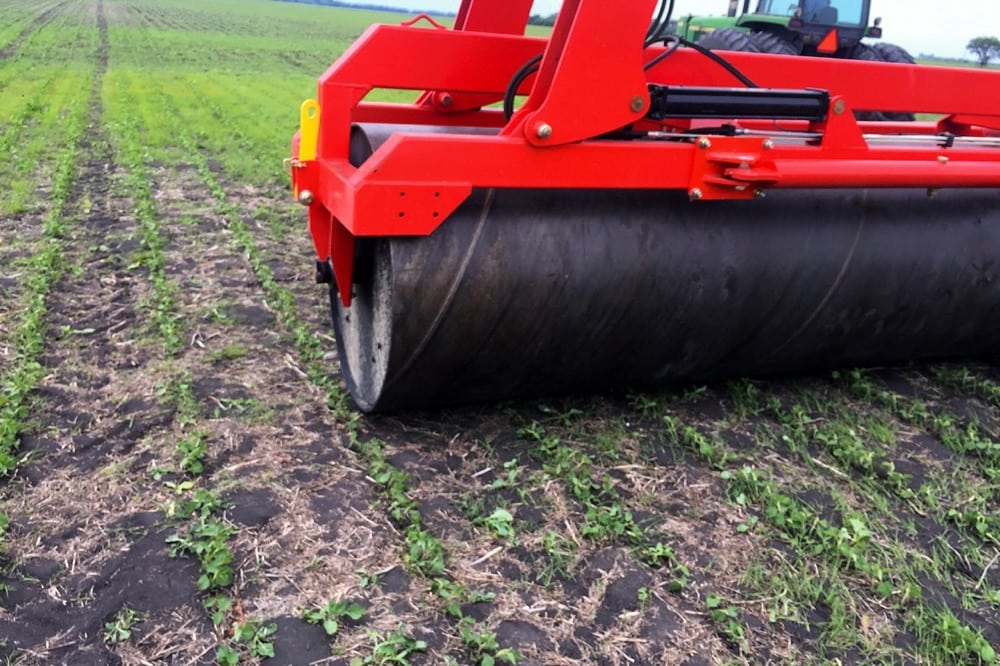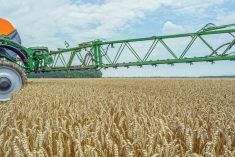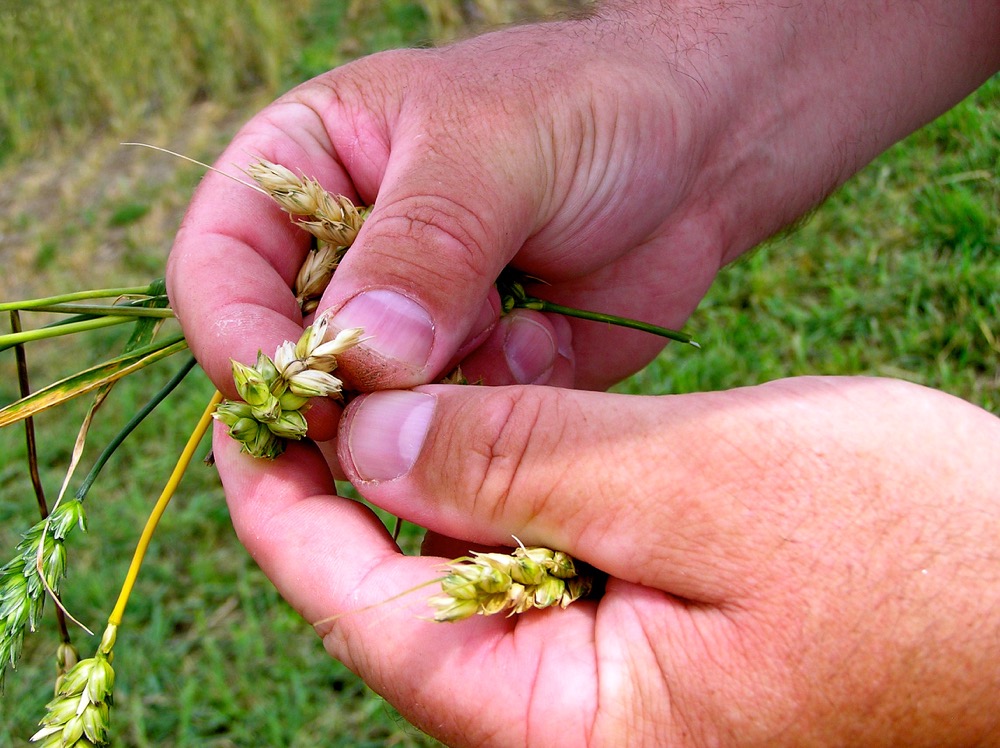To roll or not to roll? For soybean growers, ‘tis the question.
It’s become the standard strategy to keep dirt and rocks out of the combine come harvest, but Manitoba Agriculture says it may be time to take a second look at the practice.
“We want to reduce earth tag,” Terry Buss, pulse specialist with Manitoba Agriculture, said. “We want to make it smooth enough that we’re not getting earth tag and that we can harvest adequately in case pods are low. But I do have clients now who, with the seeding systems they’re using, the field is essentially pretty much flat and their header technology and their ability to use those headers are really good. So did we need to roll? That’s a question we need to ask ourselves.”
Read Also

Manitoba canola industry has new frontiers
Canola oil is still the main priority for the sector, but canola meal is increasingly the subject of research looking for new markets and uses for the oilseed’s byproduct.
Dry conditions in Manitoba have made the question that much more pertinent.
While soil must be dry to roll properly, parched soils and high winds have already made for a dramatic scene earlier this year. Residents shared video of windswept dirt and lowered visibility across Manitoba highways as seeding got underway. There’s been some rain since, but overall conditions remain relatively dry.
Buss has also heard from farmers who are now smoothing out fields covered in drifts of dirt, often from a neighbouring field that has been rolled. Those farmers risk crop injury from the harrows, but feel they have little choice as the emerging crop is buried under imported soil, Buss said.
“We should be rolling because we have a reason to roll,” he said. “With some low-disturbance zero-tillage systems, maybe rolling isn’t the issue that we think it is. It’s different for everybody, but it’s something to keep in mind.”
Manitoba Pulse and Soybean Growers shares the concern.
Production specialist Laryssa Stevenson says MPSG has launched research projects focused on rolling to get a better handle on best practices.
This year’s on-farm network trials include a look at the effects of rolling before and after emergence on plant population and yield. The group has also teamed up with David Lobb of the University of Manitoba, well known for his soil erosion research. Lobb’s two-year project will evaluate the impacts of rolling on soil properties, measure soil movement within the field, gauge sandblasting impacts and ultimately plug in the data into his modelling program, which he has already used to estimate the costs of soil degradation over the last four decades.
A third, related, study will bring in the Prairie Agricultural Machinery Institute to measure the economic costs of rolling compared to gains during harvest (e.g. higher combine speeds, less harvest loss, etc.).
In the meantime, MPSG is pushing farmers to take dry conditions into account before deciding to roll.
“Rolling is a necessity on a lot of fields in Manitoba because we’ve got stony land,” Stevenson said. “Certainly there’s other advantages as well, even when there aren’t stones, and guys want to roll because it improves ‘harvestability.’ It can reduce operator fatigue. You’re not so concerned about picking up rocks and you’re potentially able to drive the combine a little bit faster, but the disadvantages in (a dry year) might outweigh some of the benefits.”
Rolling crushes surface soil aggregates, she noted, “so it kind of creates this powder that’s very susceptible to wind and water erosion.”
Farmers may also run into reduced infiltration or reduced emergence from ponding or crusting when the rain does come, she added.
Farmers may want to consider reduced tillage Stevenson said, echoing Buss, although soybeans growers typically till pre-seeding to warm the seedbed and Manitoba research into the yield impact of tillage practices is ongoing.
Buss noted that reduced tillage may win out in a dry year when moisture conservation is key, although some Canadian research has shown a yield penalty in long-term zero till.
Where no till is not an option, a description that does apply to a number of farmer fields, the grower group is advising farmers to consider rolling after emergence.
“That way, we’re reducing the time that soil is left vulnerable to wind or water,” Stevenson said.
Post-emergence rolling comes with its own set of obstacles, however, as farmers risk plant damage if it is not done correctly.
Experts warn that rolling is best if temperatures top 28 C (25 C at the lowest limit), when stems are flaccid. Evaluation is also key, Buss stressed, and farmers should get out of their cabs to check for plant damage.
Plant development also plays a role. Farmers risk clipping cotyledons if plants are at the “hook” stage and before the first trifoliate, Buss said, while plants past the third trifoliate also risk damage.




















